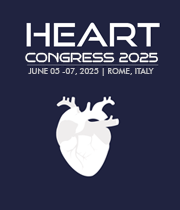Title : Postoperative atrial fibrillation after cardiac surgery: Risk factors, prevention strategies, and anesthetic considerations
Abstract:
Background and Objectives: Postoperative atrial fibrillation (POAF) is the most frequent arrhythmia following cardiac surgery, impacting patient outcomes and hospital resources. This review evaluates the incidence, risk factors, anesthetic considerations, and effective preventive strategies for managing POAF.
Materials and Methods: We conducted an evidence-based review of recent literature, clinical trials, meta-analyses, and guidelines issued by the European Society of Cardiology (ESC), American Heart Association (AHA), and Society of Thoracic Surgeons (STS). Key focus areas included predictors of POAF, anesthetic practices contributing to arrhythmogenesis, and evidence-based preventive measures.
Results: POAF affects 20–40% of cardiac surgery patients, significantly increasing morbidity, hospital stay, and costs. Identified risk factors include advanced age, hypertension, pre-existing atrial fibrillation, heart failure, inflammation, and intraoperative hemodynamic instability. Anesthetic factors influencing POAF incidence include depth of anesthesia, perioperative fluid management, and inflammation control. Prophylactic pharmacologic interventions, such as beta-blockers, amiodarone, and statins, have demonstrated effectiveness in reducing POAF incidence. Non-pharmacologic measures, including meticulous electrolyte management and optimized fluid balance, are also critical. Guidelines emphasize personalized strategies incorporating risk stratification and targeted interventions starting preoperatively and continuing through postoperative management.
Conclusions: Effective prevention and management of POAF involve a comprehensive perioperative strategy, including careful anesthetic planning, patient-specific pharmacologic interventions, and meticulous postoperative care. Adherence to multidisciplinary guidelines and ongoing research into personalized preventive strategies are essential for reducing the clinical and economic burden of POAF after cardiac surgery.



